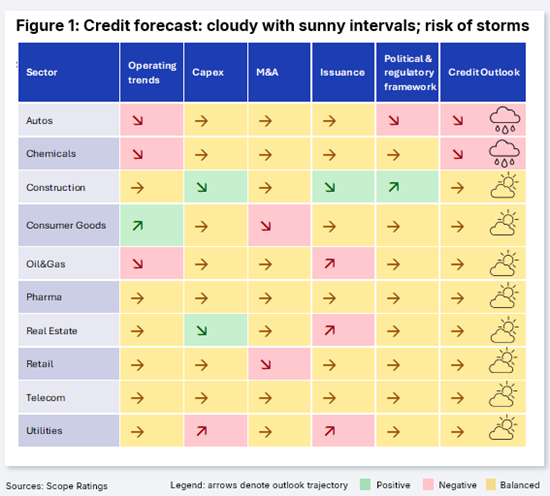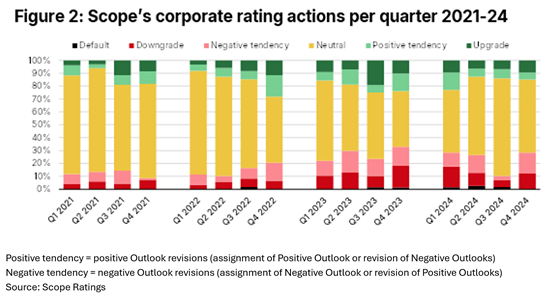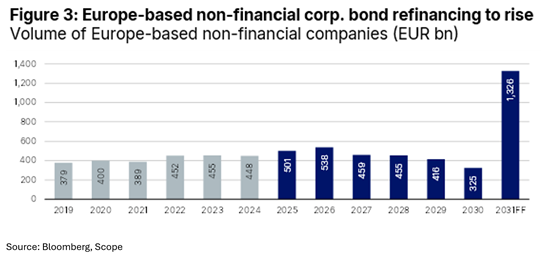Announcements
Drinks

European corporate credit outlook 2025: stability despite challenging business environment
Scope Ratings highlights that there are exceptions to the balanced outlook with some sectors facing more significant pressure from adverse structural and cyclical forces which are reducing demand and squeezing profit margins.
The automotive sector is particularly vulnerable with Scope assigning a negative outlook due to significant challenges. Similarly the chemicals sector in Europe continues to face persistent headwinds resulting in a negative sector outlook. For full details, download Scope’s Corporates Outlook 2025.

Balance sheets sturdy; rating migration points to credit pressures
“The underlying strength of larger non-financial corporate balance sheets in Europe – an inheritance of the conservative financial policies during and after the pandemic – ensures that most sectors have a balanced credit outlook despite the challenging operating environment,” says Sebastian Zank, head of corporate credit ratings production.
However, credit pressures remain evident. Scope’s rating migration in 2024 showed persistent credit pressure. Negative rating actions (around 20%) outpaced positive ones (overall 15%), well in line with the negative ratings drifts observed in 2023.

Managing US-Europe trade disputes
Leaving aside the possibility of wildcard geopolitical events that might darken the corporate outlook, the likely increase in US trade tariffs under the new Trump administration is one of the most important challenges that European companies face.
“However, there is no reason for panic,” says Zank. Many European countries and their biggest companies are heavily dependent on exports to the US. More protectionist US policy could leader to tougher transatlantic trade conditions and lead to the re-routing of products from other regions facing higher US tariffs. However, for US importers, many non-commoditised products – capital goods, specialty chemicals, medicine – cannot be easily substituted.
Rising US inflation could also make European exports competitive over time, while many European companies have a natural hedge via US based production facilities. Rising US tariffs can also create opportunities for some European companies to strengthen their market position by sourcing materials and components from markets needing to restructure their export strategies.
Refinancing challenges amid interest-rate dynamics
On the financing front, recent central-bank cuts in interest rates provide some relief in terms of new debt funding costs for European corporate borrowers – notably those with unhedged variable interest-rate exposure – but we expect policy rates to remain higher for longer keeping borrowing costs elevated. The average volume-weighted coupon on new bond placements remains 60% higher than it was before the interest-rate cycle turned in 2022.
In addition, European corporate borrowers face a significant refinancing challenge in 2025 even if it should be more manageable than a year ago. Companies generally have better access to financing and better funding conditions, but the scale of the refinancing need remains substantial. More than EUR 500bn in capital market debt is due this year (Figure 3), with around three to four times that amount in bank debt also up for refinancing.

Financing conditions ease for real estate firms; high-yield issuers under pressure
The refinancing challenge in 2025 is particularly daunting for real estate companies but they have regained access to market funding. For high-yield firms, they can expect easier access to bank funding and alternative funding channels this year.
Direct lending is likely to expand further, particularly for small and medium-sized companies, given direct lenders have substantial “dry powder” available equivalent to around a quarter to a third of assets under management and the pressure on credit metrics – particularly interest coverage ratios – is likely easing.
“Our outlook is less optimistic for micro- and small-business segments where default rates will plateau only in the second half of the year, while we see continued downward pressure on the credit ratings of high-yield issuers that we cover,” Zank says.






